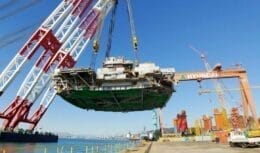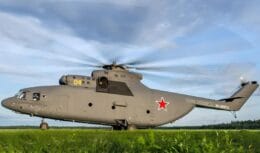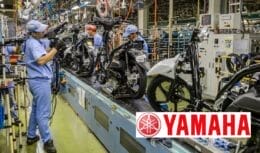
Maritime transport makes it possible to reduce logistical costs thanks to the lower occurrence of accidents and cargo safety, in addition to having a low environmental impact
The scenario of logistics matrices in Brazil is evolving, and navigation has gained greater representation. With an expanding market, cabotage grows on average two digits a year. This happens because Brazil is a country with a large number of rivers and an extensive coastline, with more than 14 port options served by cabotage. In addition, around 80% of the Brazilian population, and a large part of the industries, is located within 200 km of the approximately 8,5 km of coastline.
Read also
- Severe increase in the price of gasoline, ethanol and CNG affects Uber and 99 app drivers, and Rappi and iFood motoboys, who are thinking of leaving the profession
- Company offers 50 home office and face-to-face job openings for São Paulo and Rio Grande do Sul with salaries of up to R$ 15 thousand
- Ambev, the largest beverage company in the world, invites women to work at home office, hybrid and face-to-face; professionals from all over Brazil can participate
- URGENT selection process demands home office job openings in different areas; professionals in the beginning of their careers, full and senior from any part of the country can participate
With more competitive prices, especially for distances from 1.200 km, cabotage is an advantageous logistic option for companies of all sizes.
“In addition to making it possible to reduce logistical costs thanks to the lower occurrence of accidents and cargo safety, transport also has a low environmental impact. When compared to other modes, it emits up to five times less CO2, the main cause of the greenhouse effect", points out José Roberto Duque, CCO of Mercosul Line, a subsidiary of the CMA CGM Group, a world leader in navigation and logistics, which offers cabotage and integrated logistical services.” We are here to show customers the benefits and facilities of cabotage and how to use it to boost the logistical results of their companies. Everyone is very welcome ”, he completes.
Integrated logistics
With three lines of action – BRACO, PLATA and NEXCO, Mercosur Line serves more than 1000 cities, connecting regions from north to south of Brazil and also to Argentina and Uruguay. “As an example of success, it is important to highlight the Manaus market and its importance for the continent. This is the place where cabotage quickly solidified and where we are also the main local suppliers”, says Duque.
The way in which Mercosul Line makes it possible to diversify the companies' logistics chain generates gains by reducing risks for cargo and associated costs. “Today, most of our customers buy the service with a port involved (origin/destination). The customer seeks integrated logistics services (land + sea), from the seller's plant/factory to the buyer's location. The fact that we have other companies in the CMA CGM Group with years of experience in the field, enables us to offer a wide range of end-to-end customized options to our customers, and to offer new, more efficient, logistics and transport solutions that increasingly respect the needs of both people and the planet, being at the heart of the ambition of the CMA CGM Group, represented by BETTER WAYS, our new signature”, says Duque.
Do you know what type of goods container ships carry during cabotage? Find out right now!
Cabotage, which is transport by means of ships between seaports in the same country, is a competitive alternative for the industrial sector that needs to sell its production and reduce the logistical cost of containers.
According to Angelo Baroncini, CEO of Cia de Navegação Norsul, the adoption of cabotage in the country is still timid.
“Today the transport of cabotage ships represents something between 10 and 12% of the transport matrix”, he explains. For him, a country with proportions like Brazil should have a better distribution in the transport matrix, between maritime, rail and road.
The Administration of the Ports of Paranaguá and Antonina (APPA) released official statistical data regarding the movement of goods in the first half of this year.
Corn exports have been standing out, mainly through cabotage navigation – transport between domestic ports. There are 39.432 tons accumulated this year (January to July 17), against 19 tons in the same period of 2002.
A large part of cabotage exports are destined for the Northeastern states of Brazil. Due to lower tariffs, maritime transport of goods to northeastern states replaces road transport when dealing with long distances, thus justifying the movement of cargo by cabotage navigation.












